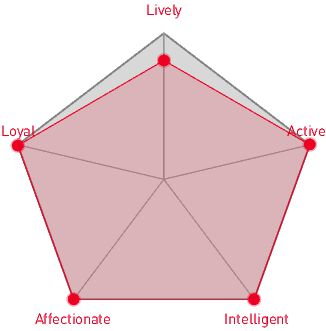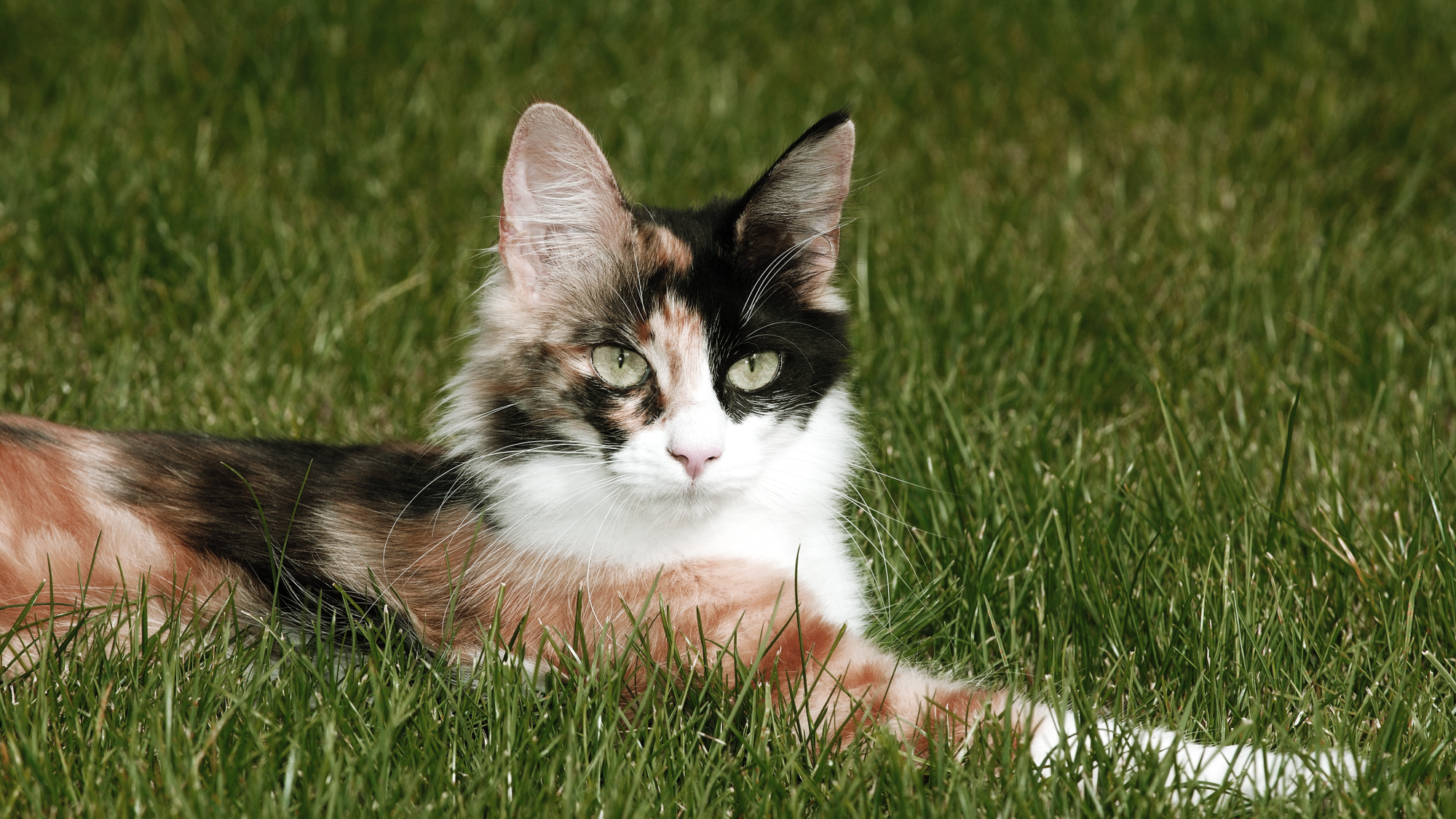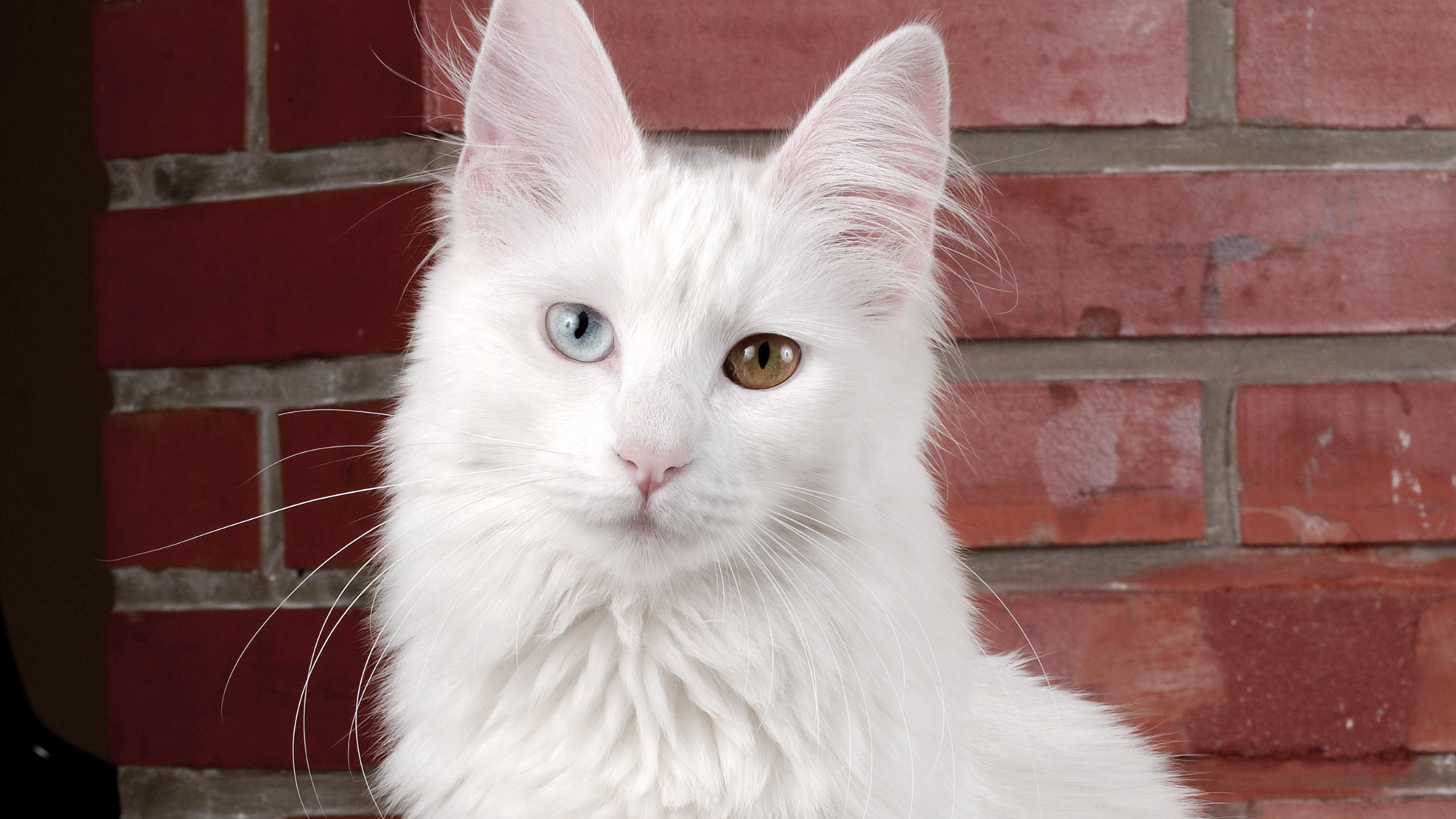
Let's talk Turkish Angoras
Their plumed tail may grab your attention but it’s their thirst for adventure that earns points for the Turkish Angora. Charm and affection are their hallmarks, along with a zest for life and a good dose of smarts. The Turkish Angora will never be bored—and will keep you on your toes as well. They have a true sense of humour and like diversion, whether with a fun toy or a game of hide-and-seek. The breed can be willful so owners should be ready to match wits with this upbeat and captivating cat.Official name: Turkish Angora
Other names: Ankara, Van Kedisi, Van Cat
Origins: Turkey

| Shedding level |  |
Warm weather? |  |
| Energy level (high, low, medium)*: | High | Family Pet?* |  |
| Compatibility with other pets |  |
* We advise against leaving pets alone for long stretches. Companionship can prevent emotional distress and destructive behaviour. Speak to your veterinarian for recommendations.
Every pet is different, even within a breed; this snapshot of this breed’s specifics should be taken as an indication.
For a happy, healthy and well-behaved pet, we recommend educating and socialising your pet as well as covering their basic welfare, social and behavioural needs.
Pets should never be left unsupervised with a child.
Contact your breeder or veterinarian for further advice.


| Baby cat: | Birth to 4 months |
| Growing kitten age: | 4 to 12 months |
| Adult age: | 1 to 7 years |
| Mature age: | 7 to 12 years |
| Senior age: | From 12 years |

1/7
Get to know the Turkish Angora
All you need to know about the breed
Refined yet rollicking, the Turkish Angora cat is a pleasure to behold, both for their luscious coat and their energetic personality. Recognised for their sophisticated appearance, the feathery tail is only the beginning of many terrific traits about the breed, which continues with their surprisingly dynamic presence.
Very lively, the Turkish Angora breed will maintain kitten-like behaviour well into adulthood so prepare for many fun years ahead. Fans of the Turkish Angora cat know them to be extremely social, coming right up to visitors to the house with a welcome greeting. On top of being alluring, they are nimble: This is a cat who will routinely scale to new heights—like the tops of sofas or your shoulder to ride along, if you don’t mind. They’ve been known to open doors and cupboards to discover what’s inside as well.
Patience is the name of the game with the Turkish Angora and owners should know that this is not only a very smart cat but a beguiling one. They can have a mind of their own but will listen to commands when strictly delivered. The Turkish Angora’s charming personality and tender approach, however, top out the lovely characteristics of this breed.

2/7
2 facts about Turkish Angoras
1. Seeing double
Common to the Turkish Angora breed is a condition called heterochromia, known more commonly as odd eyes, or two entirely different-coloured eyes. The genetic condition occurs when the level of melatonin differs from eye to eye. White cats with odd eyes can often be deaf - which can go unnoticed - so have your cat screened at the vet to check for the condition.
2. Quite the covering
That posh coat sported by the Turkish Angora breed is their signature trait, and gives them the air of elegance they’re widely known for. Besides being composed of fine silky fur that hardly mats and sheds little, it gives off a shimmer as they move, another hallmark trait. Look for their lush locks to be fully grown in by year two.
History of the breed
Prized in their native land of Turkey, the treasured Turkish Angora takes their name from the capital city of Ankara, previously Angora. The breed is said to date back over a thousand years, brought by Vikings into the European continent, with formal documentation of the cat found starting in France in the 16th century.
They were further developed by British and American breeders at the start of the 20th century after their numbers dwindled from being used in breeding programs with Persian cats. Breeding efforts by the Atatürk Forest Farm and Zoo helped preserve the breed, particularly white Turkish Angoras.
They were introduced into the U.S. in 1954 and the Cat Fancier’s Association started registering them in 1968, granting full recognition to white Turkish Angoras in 1972. The breed reached the height of fame in the 1970 animated Disney movie The Aristocats, featuring in the starring role as Duchess.

4/7
From head to tail
Physical characteristics of Turkish Angoras
1. Ears
Flöt en ekki þung eyru hanga niður beggja vegna höfuðsins
2. Feldur
Stuttur, þéttur feldur yfir vatnsheldum undirfeldi
3. Fur
Feldurinn getur verið svartur, súkkulaðibrúnn eða gulur, allt frá rjómagulum upp í rauðleitan
4. Skott
Langt skottið er ofarlega og er stöðugt á iði, stundum iðar jafnvel allur líkaminn.
5. Leggir og hryggjarsúla
Hlurfallslega vel vaxinn og gott jafnvægi á milli leggja og hryggjarsúlu.

5/7
Things to look out for
From specific breed traits to a general health overview, here are some interesting facts about your Turkish Angora

6/7
Caring for your Turkish Angora
Grooming, training and exercise tips
The Turkish Angora breed has a single coat that rarely mats and sheds very little. Weekly grooming should be done nonetheless to prevent any from occurring. Clean your cat’s ears often with a cotton ball or soft cloth dampened with appropriate veterinary products to keep them free of debris. Dental health is vital for cats so brush their teeth daily if you can, weekly at least. Keep their nails trimmed as well. This is an active cat whose goal is to play, always, and even get up to a bit of mischief. Exercise will be a given for your Turkish Angora. The breed enjoys interactive toys that squeak or light up and will keep them occupied for hours. To note: They also enjoy water and have been known to swim of their own accord! Training the Turkish Angora will be equally effective if there are games and lots of give and take. They may assert their strong will and turn on their charm, so a firm approach will produce the best results.
7/7
All about Turkish Angoras
The posh looks and delicate demeanour of the Turkish Angora may give off the impression of a fussy cat. Looks can be deceiving though, as this is an industrious breed that easily keeps themselves occupied. That silky coat doesn’t hold tangles or mats, surprisingly, so grooming routines will be kept to a minimum.
Certain breeds of cat, like the British Shorthair or Persian, are widely known but so too is the Turkish Angora. Not at all rare, they are actually fairly commonplace, especially in their home country of Turkey. The breed’s following worldwide is a devoted one as well, as they are prized for their sociable nature and high intelligence.
Read more on this topic


Your guide to buying a kitten

The cost of owning a cat

Your guide to adopting a cat

Should I choose a pure breed or mixed breed cat?
Sources
1 - Veterinary Centers of America https://vcahospitals.com/
2 - Royal Canin Cat Encyclopaedia. Ed 2010 and 2020
3 - Banfield Pet Hospital https://www.banfield.com/
4 - Royal Canin BHN Product Book